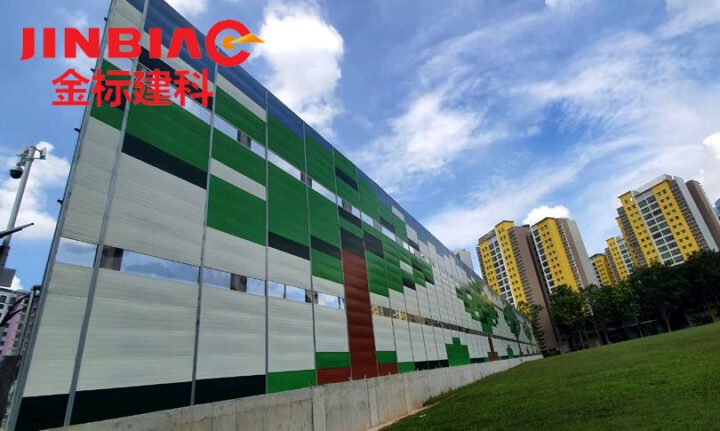
Home is not just a place to rest. It’s your sanctuary from the hustle and bustle of the world. Yet, the peace we crave is often shattered by intrusive noise. Whether it’s the neighbour’s dog barking, the ubiquitous hum of city traffic, or the persistent patter of rain, unwanted sounds can disrupt our comfort and concentration.
The good news? Soundproofing your space can significantly improve your quality of life. It has benefits beyond mere tranquillity. It can improve concentration, allow for better sleep, and even potentially increase the value of your property.
In cosmopolitan Singapore, where high-density living is the norm, soundproofing is not just a luxury—it’s a vital element in creating a calm and peaceful living environment.
With that in mind, there are ten crucial dos and don’ts to consider when installing a sound barrier in Singapore.
1. Do: Assess the Noise Source
The first step to effective sound barrier is understanding where the noise is coming from. Is it traffic from a nearby road, chatter through a thin wall, or the hum of appliances? Each source requires a different approach. Assess your home from top to bottom, and note all sources of noise.
Understanding the noise source allows you to make informed decisions about the type of sound barrier and its location. Sometimes, simple repositioning of furniture and accessories can create a significant reduction in noise levels.
2. Don’t: Neglect Acoustic Materials
We cannot overstate the importance of using high-quality acoustic materials when soundproofing. From mineral wool insulation to specific sound-damping drywall, these materials are designed to absorb or block sound effectively.
For example, the sound barrier in Singapore has a high NRC (Noise Reduction Coefficient) rating for its ability to reduce the noise that bounces off surfaces within a room. Without adequate acoustic materials, your soundproofing efforts may not yield the desired results, leaving you with a half-hearted solution.
3. Do: Seal Air Gaps
Sound is like water — it will find any opening to leak through. Sealing air gaps is a crucial step in preventing sound from penetrating your barrier. Use acoustical caulk or weather-stripping to seal any crevices or gaps where sound can escape.
Don’t forget about outlets, vents, and other small penetrations, which can often be overlooked but are prime spots for sound transmission. Effective sealing not only improves the soundproofing but also can enhance energy efficiency by reducing air leakage.
4. Don’t: Overlook Wall Construction
Proper wall construction is key to effective soundproofing. A common mistake is to focus solely on the surface layer, neglecting the wall’s structure. Staggering or even slightly off-center of the wall studs can diminish sound transmission through the wall.
Opt for double-layer drywall, or better yet, drywall with viscoelastic sound-damping material sandwiched between layers. Green Glue is a popular option that converts sound energy to heat, significantly reducing noise.
5. Do: Use Mass-Loaded Vinyl
When soundproofing, a great way to add mass and, therefore, a barrier to sound transmission is by using mass-loaded vinyl (MLV). This dense material, when applied between surfaces, can significantly reduce airborne and impact noise.
MLV is versatile and can be incorporated into walls, ceilings, and floors. It’s also pliable, making it easy to use in various room shapes and sizes. Remember, mass matters when it comes to soundproofing.
6. Don’t: Forget About Floors and Ceilings
Sound barriers are not exclusive to walls. Floors and ceilings also play a significant role in noise transmission. For upper floors, consider adding a resilient channel or sound-damping compounds like rubberized underlayment beneath the flooring material.
For ceilings, drop ceilings with sound-absorbing tiles can be an efficient solution. If feasible, layering with MLV or other sound-damping materials can provide an extra level of noise control.
7. Do: Install Soundproof Curtains or Blinds
Soundproof curtains or blinds, lined with specialised materials, can add a layer of acoustic control to your windows. These curtains not only block out light but also help to reduce external noise by absorbing and reflecting sound waves.
Even if you’ve taken extensive measures with your walls and windows, sound can still leak in through these often-ignored spaces. Soundproofing window treatments are a simple, yet effective way to bolster your sound barrier.
8. Don’t: Ignore Doors and Windows
Doors and windows are the ‘gates’ for sound to enter your home. When they are closed, they should form a tight seal to prevent sound from passing through. Utilize door sweeps, acoustic seals, and solid-core doors for interior spaces to minimize noise infiltration.
For windows, double- or triple-pane glazing with an air gap between layers can dramatically reduce sound transmission. Treat each door and window as a potential weak point in your soundproofing and address them accordingly.
9. Do: Optimize Room Layout and Furniture Placement
The way you arrange your furniture and the layout of the room can significantly affect the acoustics and soundproofing. Position large, dense furniture items against the walls to reduce sound reflections.
Additionally, consider using bookshelves filled with books, acoustic panels, or even heavy draperies as an extra layer of sound absorption. The strategic placement of these items can make a noticeable difference in the noise levels within your space.
10. Don’t: Underestimate Professional Help
While there’s a lot you can achieve with the right information and materials, sometimes professional help is necessary. Soundproofing can be quite complex, and there are cases where the skill and knowledge of experts are indispensable.
If after your best efforts to soundproof your space, you find that the noise pollution is still a problem, don’t hesitate to seek the expertise of a professional soundproofing company. They can conduct a thorough assessment of your space and provide tailored solutions for your specific needs.
Conclusion
By following these dos and don’ts, you can create an effective and reliable sound barrier for your home. Remember, the journey to a peaceful and quiet space begins with informed decisions and careful implementation. With the right strategies and a little bit of effort, you can turn your home into a haven of tranquility, shielded from the stresses of the outside world.
Hebei Jinbiao is a leading company in Noise Barrier products and Fencing products in Singapore. We guarantee to provide you with the most high-quality Sound Barrier and Fencing products along with our dedicated assistance. Do not hesitate to contact us. We are looking forward to helping you solve your noise issues, safety issues and protecting you from noise pollution as well as ensuring your safety.

